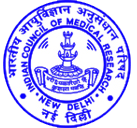Omega-3 fats are essential fatty acids that human body cannot produce. They have to necessarily to be obtained from food sources. They are an integral part of cell membranes and affect the function of the cell receptors in these membranes. They provide the starting point for making hormones that regulate blood clotting, contraction and relaxation of artery walls and inflammation. Due to these effects, omega-3 fats are considered helpful in preventing heart diseases and strokes, eczema as well as rheumatoid arthritis and have protective role in cancers.
Dietary sources of Alpha Linolenic Acid (Omega-3):
| Nutrient | Foods | Nutrient Content for 100g Edible Portion |
|---|---|---|
Alpha Linolenic Acid (Omega-3)  |
Linseeds/Flax seeds (Linum usitatissimum) | 12956 mg |
| Walnut (Juglans regia) | 8710 mg | |
| Mustard seeds (Brassica juncea) | 3341 mg | |
| Soya bean, white (Glycine max) | 1318 mg | |
| Fenugreek seeds (Trigonella foenum graecum) | 1082 mg | |
| Black gram, whole (Phaseolus mungo) | 601 mg | |
| Rajmah, red (Phaseolus vulgaris) | 557 mg | |
| Drumstick leaves (Moringa oleifera) | 446 mg | |
| Gogu leaves, red (Hibiscus cannabinus) | 435 mg | |
| Khoa | 265 mg | |
| Bean scarlet, tender (Phaseolus coccineus) | 227 mg | |
| Spinach (Spinacia oleracea) | 220 mg | |
Nutritive Value of Indian Foods-2012 & Indian Food Compositon Tables-2017, ICMR-National Institute of Nutrition,Hyderabad.

